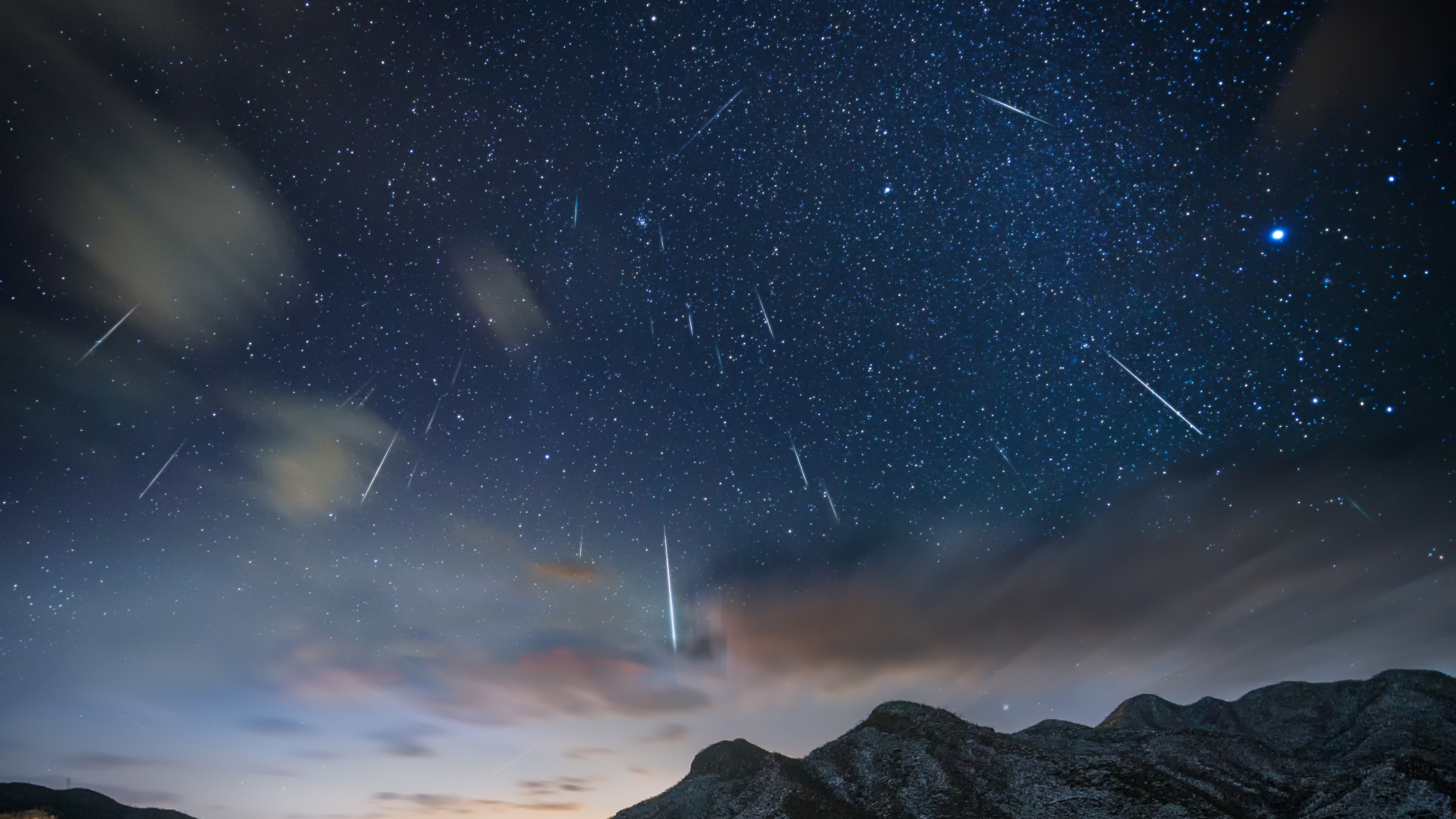Celebrate NASA's Perseverance Mars rover landing by spotting the Red Planet near the moon tonight
The apparent close approach of two objects in the night sky is called a conjunction.

Mars will dazzle like an orange gem next to the moon in the night sky tonight, just hours after NASA attempts to land its latest rover onto the Red Planet.
Mars isn't ready to leave the spotlight just yet, even after welcoming three new missions this month. This afternoon NASA will finish the long journey of its Perseverance mission to Mars' Jezero Crater to study the planet's ancient past. You can watch the Mars landing live here and on Space.com's homepage, courtesy of NASA, beginning at 2:15 p.m. EST (1915 GMT). The landing is expected at 3:55 p.m. EST (2055 GMT).
Last week, the United Arab Emirates delivered its Hope mission into orbit around the rusty-colored planet to study its atmosphere; one day later, China's Tianwen-1 mission also reached Mars orbit. And tonight, Mars will make a starring appearance near the half moon in what's called a conjunction.
Related: How to watch NASA's Perseverance rover land on Mars
Perseverance rover's Mars landing: Everything you need to know
To catch the moon and Mars dueting in the evening sky, look south to find the moon in its half-moon phase. The moon is waxing, so its near side will become increasingly lit until it reaches full moon around Feb. 26, according to NASA.
The moon and Mars will be close enough together in the sky that they will appear to be just a few finger-widths apart, or 3.7 degrees to the celestial south, from each other.
If you're into the nitty gritty, Mars and the moon will be at their closest apparent approach in the night sky when they are at a right ascension of 03h17m20s, according to In-the-sky.org. The moon's declination will be +15°57', and Mars' declination will be +19°39'.
Breaking space news, the latest updates on rocket launches, skywatching events and more!
Book of Mars: $22.99 at Magazines Direct
Within 148 pages, explore the mysteries of Mars. With the latest generation of rovers, landers and orbiters heading to the Red Planet, we're discovering even more of this world's secrets than ever before. Find out about its landscape and formation, discover the truth about water on Mars and the search for life, and explore the possibility that the fourth rock from the sun may one day be our next home.
The conjunction will occur in the constellation Aries.
Pay special attention to the apparent size of the moon: If Earth's natural satellite appears smaller than usual, your eyes aren't playing tricks on you. The moon travels in an elliptical orbit around our planet, not a perfect circular orbit.
This changing distance between the two objects means that the moon's apparent size in the sky also varies. Tonight the moon reaches apogee, the point in its orbit when it is most distant from Earth. It's the opposite of this effect that causes what's popularly known as a supermoon.
Visit Space.com today for complete coverage of the Perseverance Mars rover's landing on the Red Planet.
Editor's note: If you capture an amazing photo of the moon and Mars and would like to share it with Space.com for a story or gallery, send images and comments to managing editor Tariq Malik at spacephotos@space.com.
Follow Doris Elin Urrutia on Twitter @salazar_elin. Follow us on Twitter @Spacedotcom and on Facebook.

Doris is a science journalist and Space.com contributor. She received a B.A. in Sociology and Communications at Fordham University in New York City. Her first work was published in collaboration with London Mining Network, where her love of science writing was born. Her passion for astronomy started as a kid when she helped her sister build a model solar system in the Bronx. She got her first shot at astronomy writing as a Space.com editorial intern and continues to write about all things cosmic for the website. Doris has also written about microscopic plant life for Scientific American’s website and about whale calls for their print magazine. She has also written about ancient humans for Inverse, with stories ranging from how to recreate Pompeii’s cuisine to how to map the Polynesian expansion through genomics. She currently shares her home with two rabbits. Follow her on twitter at @salazar_elin.

